- Maximizing Tomato Harvest: Fertilization Techniques
- The Importance of Fertilization
- Choosing the Right Fertilizer
- Timing and Frequency of Fertilization
- Additional Fertilization Techniques
- The Bottom Line
- Choosing the Right Fertilizer for Tomato Plants
- 1. Nutrient Composition
- 2. Slow-Release vs. Water-Soluble
- 3. Organic vs. Synthetic
- 4. Soil Testing
- 5. Application Method
- Conclusion
- Understanding Nutrient Requirements of Tomato Plants
- Preparing the Soil for Tomato Planting
- Clear the Area
- Test the Soil
- Amend the Soil
- Till the Soil
- Remove Large Clumps
- Apply Organic Fertilizer
- Add Mulch
- Timing and Frequency of Fertilization
- Timing
- Frequency
- Organic Fertilizers for Sustainable Tomato Harvest
- 1. Compost
- 2. Manure
- 3. Fish Emulsion
- 4. Blood Meal
- 5. Seaweed Extract
- Importance of Nitrogen, Phosphorus, and Potassium for Tomato Plants
- Nitrogen (N)
- Phosphorus (P)
- Potassium (K)
- Fertilizing Tomato Plants at Different Stages of Growth
- 1. Pre-Planting
- 2. Seedling Stage
- 3. Vegetative Stage
- 4. Flowering and Fruit Setting Stage
- 5. Maintenance Stage
- Tips for Applying Fertilizer to Tomato Plants
- Choose the Right Fertilizer
- Follow the Recommended Dosage
- Apply Fertilizer at the Right Time
- Avoid Direct Contact with Stems and Leaves
- Water after Fertilization
- Maintain a Regular Fertilization Schedule
- “Question-Answer”
- What is the best fertilizer for tomatoes?
- How often should I fertilize my tomato plants?
- Can I use organic fertilizers for tomatoes?
- What are some signs that my tomato plants need fertilization?
- Is it possible to get 15kg of tomatoes from just one plant?
- How can I maximize the harvest from my tomato plants?
- Can I use foliar fertilizers on tomato plants?
- “Video” MAGIC FERTILIZER FOR ANY PLANT (100% success result) !
Tomatoes are one of the most popular and versatile vegetables to grow in a home garden. Not only are they delicious, but they are also packed with essential nutrients. If you’re looking to maximize your tomato harvest, fertilization techniques play a crucial role. With the right fertilizer and proper application, it’s possible to achieve a bumper crop of tomatoes with yields as high as 15kg from just one bush.
When it comes to fertilizing tomatoes, it’s important to understand the specific needs of these plants. Tomatoes require a balanced blend of nutrients, including nitrogen, phosphorus, and potassium, to thrive. The right combination of these elements will promote healthy growth, strong stems, and an abundance of fruit.
One popular technique for maximizing tomato yield is through the use of organic fertilizers. Organic fertilizers, such as compost, manure, and bone meal, provide a slow-release source of nutrients that nourish the plants over an extended period. This not only helps to prevent nutrient deficiencies but also improves soil structure and fertility in the long term.
“One popular technique for maximizing tomato yield is through the use of organic fertilizers.”
Another effective technique is to supplement the soil with additional nutrients during the growing season. This can be done by using water-soluble fertilizers or foliar sprays. Water-soluble fertilizers are applied directly to the soil and are quickly absorbed by the plant’s roots. Foliar sprays, on the other hand, are applied directly to the leaves and are rapidly taken up by the plant. Both methods provide a quick boost of nutrients when the plants need them most, resulting in increased growth and fruit production.
In conclusion, maximizing your tomato harvest is possible with the right fertilization techniques. By providing your tomato plants with a balanced blend of nutrients and using organic fertilizers, you can ensure healthy growth and bountiful fruit production. Additionally, supplementing the soil with additional nutrients during the growing season can provide a much-needed boost to support optimal growth and yield. With these techniques, you can achieve impressive harvests of up to 15kg from just one tomato bush.
Maximizing Tomato Harvest: Fertilization Techniques
The Importance of Fertilization
Fertilization is a critical aspect of growing healthy and productive tomato plants. By providing the right nutrients in the right quantities, you can encourage robust growth, increased fruit production, and enhanced overall plant vigor.
Choosing the Right Fertilizer
When it comes to fertilizing tomatoes, it’s essential to select a fertilizer that is specifically formulated for tomato plants. These fertilizers typically have a higher concentration of essential nutrients like nitrogen, phosphorus, and potassium, which are vital for healthy tomato growth.
Organic or Synthetic Fertilizer: You can choose between organic or synthetic fertilizers. Organic fertilizers are derived from natural sources and promote soil health, while synthetic fertilizers are formulated with specific nutrient ratios.
Timing and Frequency of Fertilization
Fertilizing tomatoes at the right time and frequency is crucial for maximizing your harvest. Here are some general guidelines:
- Pre-Planting: Before planting your tomato seedlings, mix a balanced slow-release fertilizer into the soil to provide nutrients throughout the growing season.
- Early Growth Stage: Once your plants have established their roots, apply a balanced liquid fertilizer every two weeks to support healthy vegetative growth.
- Flowering and Fruit Setting: Switch to a fertilizer with a higher phosphorus content to promote flower formation and fruit setting. Apply it every two weeks until the fruit starts to ripen.
- Fruit Development: As the tomatoes start to ripen, reduce the frequency of fertilization to avoid excessive leaf growth and redirect the plant’s energy towards fruit development.
Additional Fertilization Techniques
Aside from regular fertilization, there are some additional techniques that can help maximize your tomato harvest:
- Side-Dressing: Apply additional fertilizer around the base of the plants during the growing season to provide a nutrient boost.
- Foliar Feeding: Spray a diluted liquid fertilizer on the leaves of the plants to provide quick nutrient absorption.
- Epsom Salt: Add Epsom salt to your regular fertilizer regimen to supply magnesium, which is essential for healthy tomato growth.
Note: It’s crucial to follow the recommended application rates mentioned on the fertilizer packaging to avoid nutrient imbalances or plant damage.
The Bottom Line
By implementing the right fertilization techniques, you can significantly increase your tomato harvest. Remember to choose the right fertilizer, time your applications correctly, and consider additional techniques for maximum nutrient absorption. With proper fertilization, your tomato plants will thrive, producing healthy and abundant fruits.
Choosing the Right Fertilizer for Tomato Plants
When it comes to growing healthy and productive tomato plants, choosing the right fertilizer is crucial. Fertilizers supply essential nutrients that tomato plants need for growth, fruit development, and overall health. Here are some factors to consider when selecting a fertilizer for your tomato plants:
1. Nutrient Composition
Tomato plants require a balanced supply of macronutrients, including nitrogen (N), phosphorus (P), and potassium (K), as well as various micronutrients. When choosing a fertilizer, look for a balanced formula that provides these essential nutrients in the appropriate ratios. A common recommendation for tomato plants is a fertilizer with an NPK ratio of around 10-10-10 or 14-14-14.
2. Slow-Release vs. Water-Soluble
There are two main types of fertilizers: slow-release and water-soluble. Slow-release fertilizers release nutrients gradually over an extended period, making them suitable for long-term growth and reducing the risk of over-fertilization. Water-soluble fertilizers, on the other hand, provide an immediate nutrient boost but may require more frequent application. Consider your gardening style and preferences when choosing between these two types.
3. Organic vs. Synthetic
Another important consideration is whether to use organic or synthetic fertilizers. Organic fertilizers are derived from natural sources and often contain beneficial microorganisms. They promote soil health and long-term sustainability. Synthetic fertilizers, on the other hand, are chemically formulated and provide precise nutrient ratios. Choose the type that aligns with your gardening philosophy and goals.
4. Soil Testing
Prior to selecting a fertilizer, it’s beneficial to conduct a soil test to determine nutrient deficiencies and pH level. This will help you choose a fertilizer that addresses the specific needs of your soil and tomato plants. Soil testing kits are available at garden centers and can provide valuable insights to optimize your fertilizer selection.
5. Application Method
Consider the application method of the fertilizer you choose. Some fertilizers are designed for direct application to the soil, while others can be applied as liquid sprays. The application method will depend on your preference and the specific needs of your tomato plants. Just make sure to follow the instructions provided by the manufacturer for optimal results.
Conclusion
Choosing the right fertilizer is a critical step in maximizing the tomato harvest from your plants. Consider the nutrient composition, slow-release vs. water-soluble options, organic vs. synthetic choices, soil testing results, and application method to ensure your tomato plants receive the necessary nutrients for healthy growth and abundant fruit production.
Understanding Nutrient Requirements of Tomato Plants
Tomato plants require specific nutrients to grow and produce a healthy crop. Understanding the nutrient requirements of tomato plants is essential for maximizing their harvest. Here are some key nutrients that tomato plants need:
- Nitrogen: Nitrogen is crucial for tomato plant growth and helps in the production of chlorophyll, which is necessary for photosynthesis. Lack of nitrogen can result in stunted growth and yellowing leaves.
- Phosphorus: Phosphorus is essential for root development and fruit formation. It promotes the overall growth and flowering of tomato plants.
- Potassium: Potassium helps in the transportation of water and nutrients in tomato plants. It enhances fruit quality, improves disease resistance, and increases the overall yield.
- Calcium: Calcium is vital for preventing blossom end rot, a common disorder in tomatoes. It strengthens cell walls and helps regulate nutrient uptake.
- Magnesium: Magnesium is an essential component of chlorophyll and is necessary for photosynthesis. It also aids in the absorption of other nutrients.
- Sulfur: Sulfur is important for protein synthesis and overall plant growth. It also helps improve the flavor and aroma of tomatoes.
While these are the primary nutrients needed by tomato plants, they also require smaller amounts of trace elements such as iron, zinc, copper, manganese, and boron. These trace elements play crucial roles in various physiological processes, including enzyme activation and disease resistance.
It’s important to ensure that tomato plants receive a balanced and appropriate supply of these nutrients throughout their growth stages. Using a well-balanced fertilizer or organic compost can help provide these nutrients to the plants.
Additionally, testing the soil before planting can help determine the nutrient deficiencies or imbalances. Soil testing can guide gardeners in amending the soil with appropriate fertilizers or amendments to meet the specific nutrient needs of tomato plants.
| Nutrient | Symptoms of Deficiency |
|---|---|
| Nitrogen | Stunted growth, yellowing leaves |
| Phosphorus | Purple coloration on leaves, poor flowering |
| Potassium | Leaf curling, weak stems |
| Calcium | Blossom end rot, brittle leaves |
| Magnesium | Yellowing between leaf veins |
| Sulfur | Pale green leaves, overall stunting |
By understanding the nutrient requirements and addressing any deficiencies or imbalances, tomato growers can ensure healthier plants and maximize their harvest.
Preparing the Soil for Tomato Planting
Before planting tomatoes, it is essential to prepare the soil to create the optimal growing conditions. This step is vital as it sets the foundation for a healthy and productive tomato plant.
Clear the Area
Start by clearing the area where you will be planting the tomatoes. Remove any weeds, rocks, or debris that may interfere with the growth of the plants. This will reduce competition for nutrients and provide a clean planting environment.
Test the Soil
It is important to know the composition of your soil before planting tomatoes. Conduct a soil test to determine the pH level and nutrient content. Tomatoes prefer slightly acidic soil with a pH between 6.0 and 6.8. Adjust the pH level if necessary by adding lime to raise it or sulfur to lower it.
Amend the Soil
Based on the results of the soil test, amend the soil to ensure it has the necessary nutrients for tomato plants. Add organic matter such as compost, well-rotted manure, or leaf mold to improve soil structure, drainage, and fertility.
Till the Soil
Use a garden tiller or a pitchfork to loosen and aerate the soil to a depth of about 12 inches. This will allow the roots of the tomato plants to penetrate the soil easily and access essential nutrients and water.
Remove Large Clumps
After tilling, remove any large clumps of soil to create a smooth and even surface. This will make it easier for the tomato plants to establish their root systems and minimize uneven water distribution.
Apply Organic Fertilizer
Prior to planting, apply organic fertilizer to provide a nutrient boost for the tomato plants. Choose a fertilizer specifically formulated for tomatoes and follow the instructions on the package for application rates.
Add Mulch
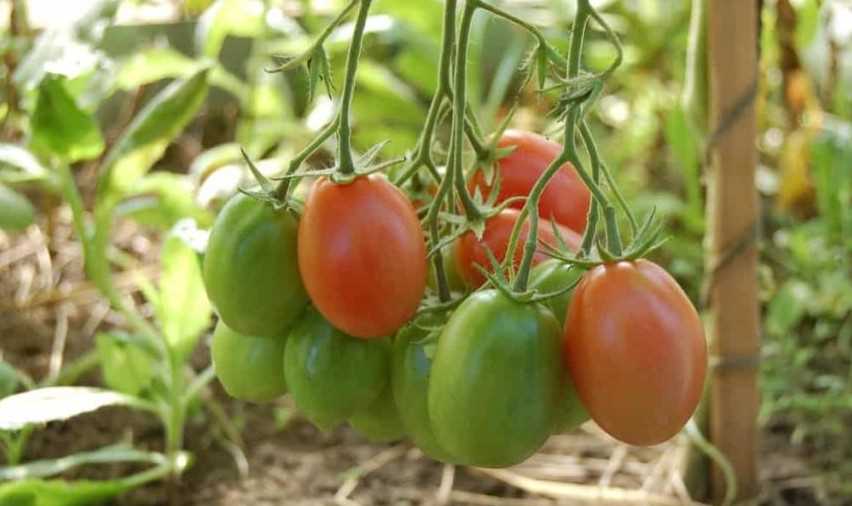
Finally, add a layer of organic mulch around the base of the tomato plants. This will help conserve moisture, suppress weed growth, and regulate soil temperature. Good options for mulch include straw, wood chips, or compost.
By following these steps to prepare the soil for tomato planting, you can create an optimal growing environment that will maximize your tomato harvest.
Timing and Frequency of Fertilization
Proper timing and frequency of fertilization are crucial factors in maximizing tomato harvest. By understanding when and how often to fertilize your tomato plants, you can ensure optimal growth and productivity.
Timing
- When planting tomatoes, it is recommended to incorporate a slow-release fertilizer into the soil before transplanting. This will provide a baseline of nutrients for the young plants.
- After transplanting, it is important to wait until the plants have established their root systems before applying additional fertilizer. This generally takes about 2-3 weeks.
- Once the plants have developed a strong root system, it is time to begin regular fertilization. This is usually around the time when the first fruits appear.
Frequency
Fertilizer should be applied to tomato plants throughout the growing season to ensure a steady supply of nutrients. Here are some general guidelines for fertilization frequency:
| Growth Stage | Frequency of Fertilization |
|---|---|
| Early growth stage (after transplanting) | Every 2-3 weeks |
| Flowering and fruiting stage | Every 1-2 weeks |
| Mid to late season | Every 3-4 weeks |
It is important to note that these are general guidelines and may vary depending on the specific needs of your tomato plants. Regular monitoring of your plants’ nutrient levels and adjusting the fertilization frequency accordingly is recommended.
Organic Fertilizers for Sustainable Tomato Harvest
When it comes to maximizing your tomato harvest, using organic fertilizers is not only a sustainable option but also ensures the health and flavor of your tomatoes. Organic fertilizers provide essential nutrients to the soil, promoting the growth and development of the plants. Here are some organic fertilizers that you can use to achieve a sustainable and bountiful tomato harvest:
1. Compost
Compost is an excellent organic fertilizer that you can make at home using kitchen scraps, yard waste, and other organic materials. It is rich in nutrients, improves soil structure, and enhances moisture retention. Add a layer of compost to the soil before planting your tomato seedlings, and continue to incorporate it into the soil throughout the growing season. This will provide a steady supply of nutrients for your tomatoes.
2. Manure
Another great organic fertilizer for tomatoes is manure, which is readily available from farm animals like cows, horses, and chickens. Manure is rich in nitrogen, phosphorus, and potassium, all of which are essential for healthy tomato plants. Use well-aged manure to avoid burning or damaging your plants. Mix it into the soil before planting or apply as a side dressing during the growing season.
3. Fish Emulsion
Fish emulsion is a liquid organic fertilizer made from fish byproducts. It is a fantastic source of nutrients like nitrogen, phosphorus, and potassium, along with trace elements that are beneficial for plant growth. Fish emulsion is usually diluted with water and applied as a foliar spray or poured directly onto the soil around the base of the plants. It provides a quick boost of nutrients, stimulating vigorous growth in tomatoes.
4. Blood Meal
Blood meal is a powdered organic fertilizer made from dried animal blood. It is an excellent source of nitrogen, which is crucial for the development of leafy green plants like tomatoes. Blood meal can be incorporated into the soil before planting or applied as a top dressing during the growing season. It releases nutrients gradually, promoting steady growth and preventing nutrient deficiencies.
5. Seaweed Extract
Seaweed extract is a natural organic fertilizer made from seaweed. It contains a wide range of nutrients, including trace elements and growth hormones that promote plant growth and development. Seaweed extract can be applied as a foliar spray or diluted and watered into the soil. Regular use of seaweed extract can enhance the overall health and resilience of your tomato plants.
Remember to always follow the instructions on the packaging when using organic fertilizers. Applying too much can lead to nutrient imbalances or even damage to your plants. By incorporating organic fertilizers into your tomato gardening routine, you can enjoy a sustainable and abundant harvest while keeping your plants and the environment healthy.
Importance of Nitrogen, Phosphorus, and Potassium for Tomato Plants
Tomato plants require a variety of nutrients for healthy growth and maximum yield. Among these nutrients, nitrogen (N), phosphorus (P), and potassium (K) are particularly crucial. Each of these elements serves different functions in the plant’s growth and development.
Nitrogen (N)
- Nitrogen is an essential component of amino acids, the building blocks of proteins, which are vital for cell growth and development.
- It plays a crucial role in promoting green and leafy growth in tomato plants.
- Nitrogen helps boost chlorophyll production, enabling plants to effectively convert sunlight into energy through photosynthesis.
Phosphorus (P)
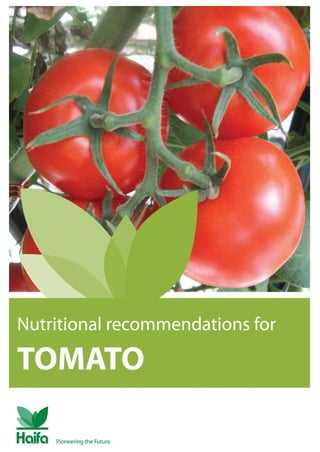
- Phosphorus is involved in various metabolic processes in tomato plants.
- It helps in the transfer and storage of energy within the plant.
- Phosphorus is essential for root development, aiding in the establishment of strong and healthy root systems.
- It also promotes flowering and fruit production, contributing to overall plant productivity.
Potassium (K)
- Potassium is necessary for the activation of certain enzymes involved in plant growth.
- It helps regulate water movement within the plant, maintaining optimal hydration levels.
- Potassium plays a crucial role in enhancing disease resistance in tomato plants.
- It also influences fruit quality, flavor, and color development.
It is important to provide tomato plants with a balanced supply of these macronutrients throughout their growth cycle. A deficiency or imbalance in any of these elements can lead to stunted growth, reduced yield, and increased susceptibility to diseases and pests. Regular soil testing and appropriate fertilization techniques can help ensure that tomato plants receive adequate amounts of nitrogen, phosphorus, and potassium for optimum growth and productivity.
Fertilizing Tomato Plants at Different Stages of Growth
Proper fertilization is crucial for maximizing the yield of tomato plants. By providing the right nutrients at the right time, you can ensure healthy growth and abundant harvest. Here are some guidelines for fertilizing tomato plants at different stages of growth:
1. Pre-Planting
Before planting tomato seedlings, it is recommended to prepare the soil by incorporating organic matter such as compost or well-aged manure. This will enrich the soil with essential nutrients and improve its structure, drainage, and water-holding capacity.
Tip: It is also recommended to perform a soil test to determine the nutrient levels and pH of the soil. This will help you to tailor your fertilization plan accordingly.
2. Seedling Stage
During the seedling stage, tomato plants are still small and delicate. It is important to provide them with a balanced fertilizer that contains nitrogen, phosphorus, and potassium (NPK). Use a water-soluble fertilizer and follow the package instructions for dilution ratios and frequency of application. Apply the fertilizer gently, avoiding direct contact with the seedlings.
Tip: It is advisable to use a diluted fish emulsion fertilizer, as it provides a good balance of nutrients and is gentle on young plants.
3. Vegetative Stage
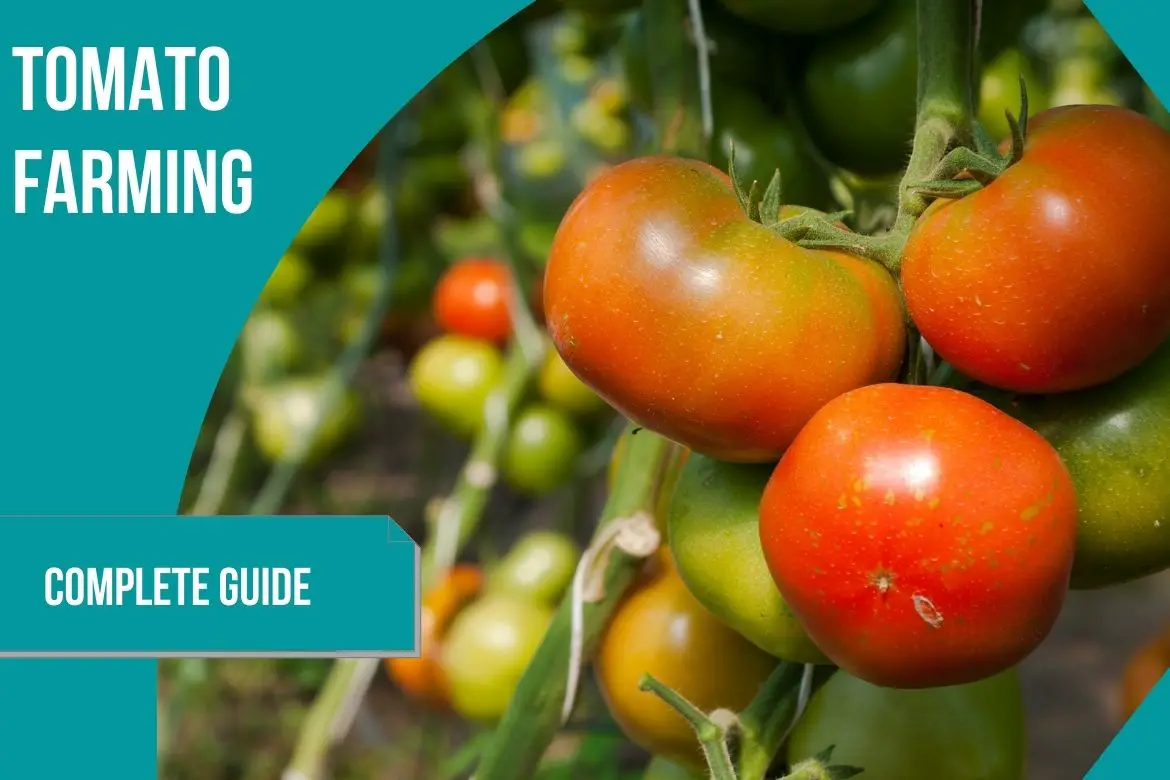
As tomato plants enter the vegetative stage and start producing leaves and stems, they require more nitrogen for healthy growth. Nitrogen promotes lush foliage and strong stems. Apply a balanced granular fertilizer with a higher proportion of nitrogen (e.g., a formula with an NPK ratio of 10-5-5). Spread the granules evenly around the base of the plants and water thoroughly.
Tip: Avoid using fertilizers high in phosphorus (the middle number in the NPK ratio) during this stage, as it can lead to excessive leafy growth at the expense of fruit production.
4. Flowering and Fruit Setting Stage
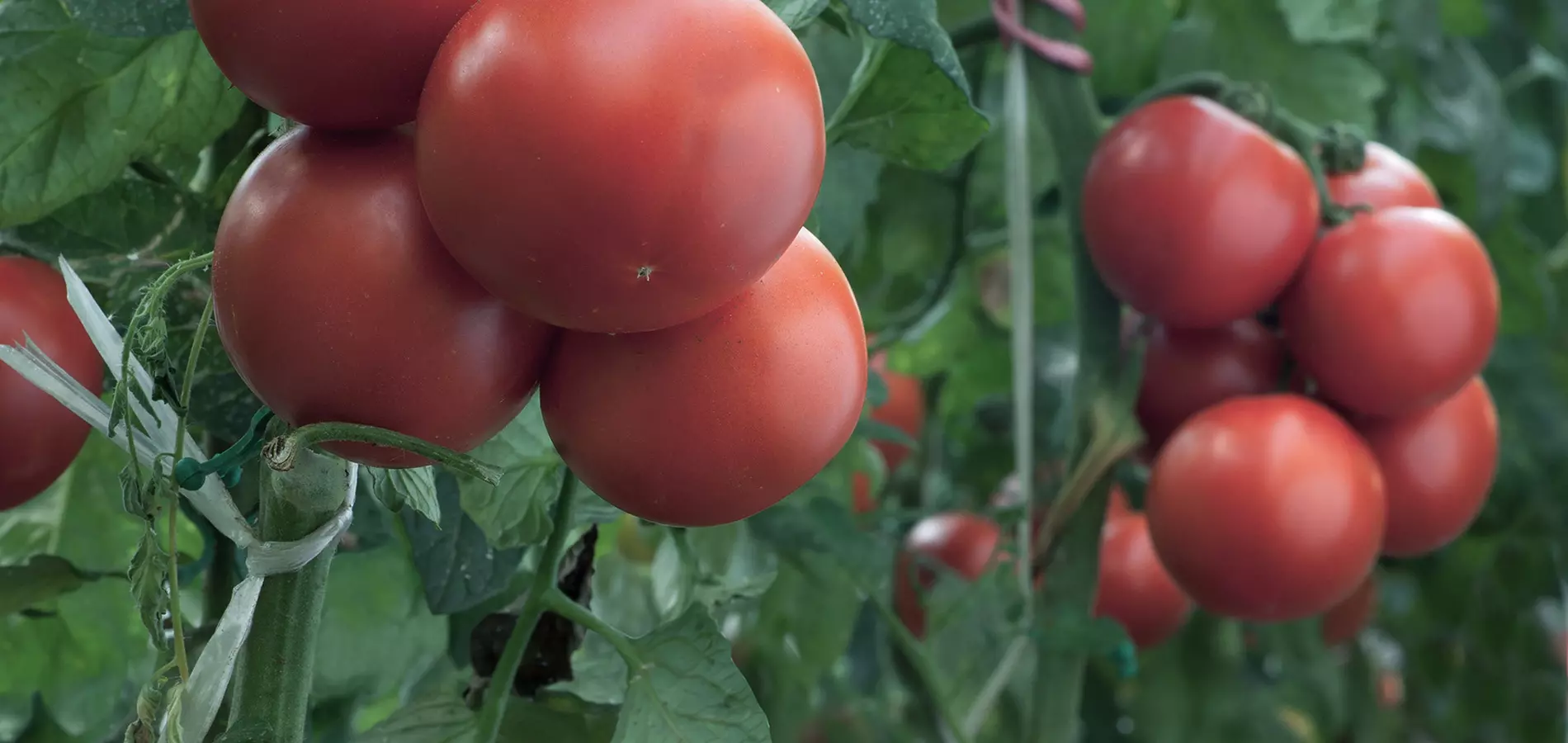
During the flowering and fruit setting stage, tomato plants require increased amounts of potassium (the last number in the NPK ratio) to support the development of flowers and fruits. Use a balanced fertilizer with a higher proportion of potassium (e.g., a formula with an NPK ratio of 5-10-10). Apply it as a side dressing, meaning spread it around the base of the plants, keeping the granules away from the stems. Water the plants thoroughly after application.
Tip: To encourage fruit setting, you can also use a phosphorus-rich fertilizer. Look for a formula with an NPK ratio of 5-10-5 or similar.
5. Maintenance Stage
During the maintenance stage, continue to provide regular fertilization with a balanced granular fertilizer. Follow the package instructions for the application rate and frequency. Monitor the plants for any signs of nutrient deficiency or excess, such as yellowing leaves or stunted growth, and adjust the fertilization regimen accordingly.
Tip: Consider using organic fertilizers or slow-release fertilizers for long-term nutrient supply and sustainability.
By following these guidelines and providing adequate fertilization at each stage of growth, you can optimize the health and productivity of your tomato plants, ultimately leading to a bountiful harvest.
Tips for Applying Fertilizer to Tomato Plants
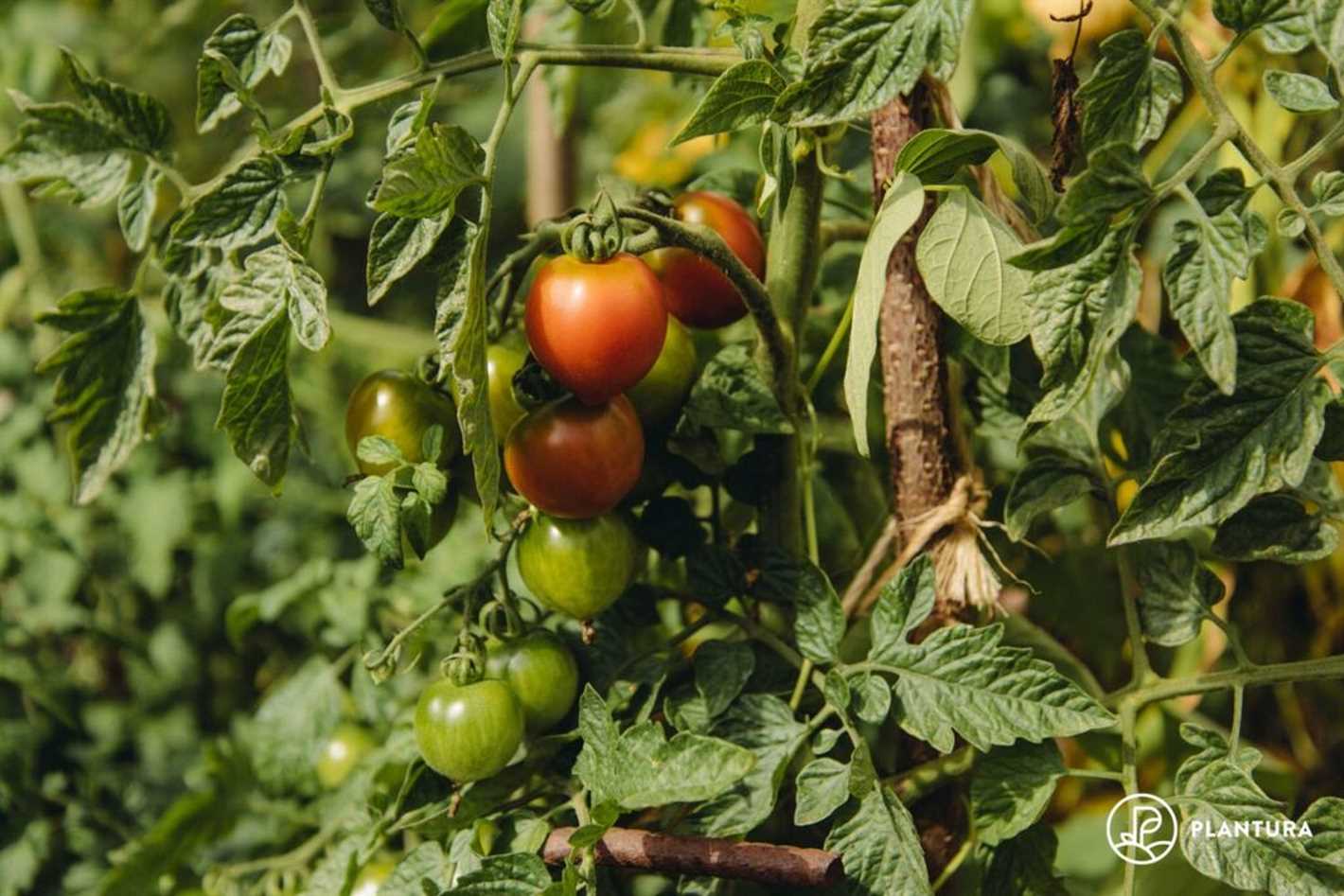
Proper fertilization is essential for maximizing tomato harvest and ensuring healthy plant growth. Here are some tips for applying fertilizer to tomato plants:
Choose the Right Fertilizer
There are different types of fertilizers available, such as organic and synthetic fertilizers. Organic fertilizers, like compost or manure, provide slow-release nutrients and improve soil structure. Synthetic fertilizers, on the other hand, deliver nutrients quickly but may have a negative impact on soil health. Choose a fertilizer that suits your gardening preferences and needs.
Follow the Recommended Dosage
Read the instructions on the fertilizer packaging and follow the recommended dosage. Over-fertilizing can lead to nutrient burn, stunted growth, or even plant death. Under-fertilizing, on the other hand, may result in nutrient deficiencies and poor productivity. It’s important to find the right balance.
Apply Fertilizer at the Right Time
Apply fertilizer when the tomato plants are actively growing. This is usually after the seedlings have been planted or transplanted, and once they have developed a few sets of true leaves. Applying fertilizer too early can cause fertilizer burn, while applying it too late may limit the plant’s ability to use the nutrients effectively.
Avoid Direct Contact with Stems and Leaves
When applying fertilizer, take care to avoid direct contact with the stems and leaves of the tomato plants. Fertilizer salts can cause burning and damage to plant tissues. Instead, spread the fertilizer around the base of the plant, creating a circle around it.
Water after Fertilization
After applying fertilizer, water the plants thoroughly to help the nutrients reach the root zone. This will prevent burning and ensure that the plants can absorb the nutrients effectively. Watering also helps to flush out excess salts and prevent the build-up of salts in the soil.
Maintain a Regular Fertilization Schedule
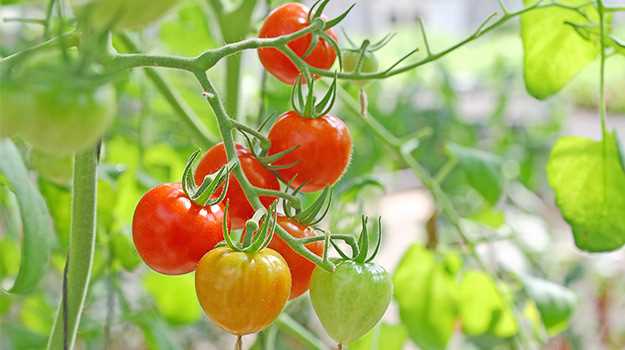
To ensure optimal plant growth and productivity, maintain a regular fertilization schedule throughout the growing season. This can involve fertilizing every two to three weeks or as recommended by the specific fertilizer you are using. Regular fertilization will provide a steady supply of nutrients for continuous plant growth.
Remember to always refer to the specific instructions on the fertilizer packaging and consider the specific needs of your tomato plants. With proper fertilization, you can enjoy a bountiful tomato harvest and healthy plants.
“Question-Answer”
What is the best fertilizer for tomatoes?
The best fertilizer for tomatoes is one that is high in nitrogen, phosphorus, and potassium. This will help promote healthy growth and maximum fruit production. Some examples include 10-10-10 or 14-14-14 fertilizers.
How often should I fertilize my tomato plants?
You should fertilize your tomato plants every 2-3 weeks during the growing season. This will provide them with a constant supply of nutrients and help maximize their harvest.
Can I use organic fertilizers for tomatoes?
Yes, you can use organic fertilizers for tomatoes. Organic fertilizers, such as compost or manure, provide slow-release nutrients and improve soil fertility. They are a great option for those who prefer to use natural methods in their gardening.
What are some signs that my tomato plants need fertilization?
Some signs that your tomato plants need fertilization include pale or yellow leaves, stunted growth, and low fruit production. These can be indicators that the plants are lacking essential nutrients and need a boost of fertilizer.
Is it possible to get 15kg of tomatoes from just one plant?
While it is not common to get such a high yield from a single tomato plant, it is possible with the right care and fertilization techniques. Following proper pruning, staking, and fertilization methods can help increase the fruit production of each plant.
How can I maximize the harvest from my tomato plants?
To maximize the harvest from your tomato plants, you can follow a few techniques. These include regular fertilization, proper watering, pruning to remove suckers, staking or caging for support, and providing adequate sunlight. These practices can help promote healthy growth and increase fruit production.
Can I use foliar fertilizers on tomato plants?
Yes, you can use foliar fertilizers on tomato plants. Foliar fertilizers are sprayed directly on the leaves and are absorbed by the plant. They provide a quick boost of nutrients and can be beneficial in addition to regular soil fertilization.







